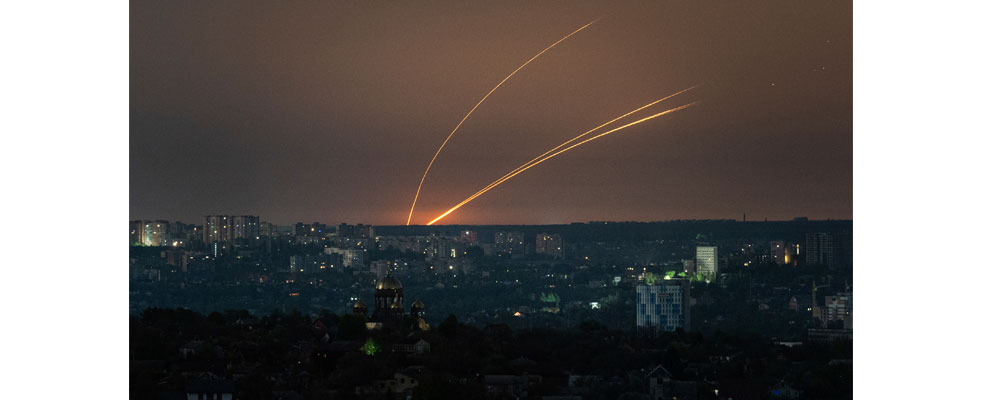Ukraine, Apr. 21: A 79-year-old woman makes the sign of the cross and, gripping her cane, leaves her home in a quaint village in northeast Ukraine.
Torn screens, shattered glass and scorched trees litter the yard of Olha Faichuk’s apartment building in Lukiantsi, north of the city of Kharkiv. Abandoned on a nearby bench is a shrapnel-pierced cellphone that belonged to one of two people killed when a Russian bomb struck, leaving a blackened crater in its wake.
“God, forgive me for leaving my home, bless me on my way,” Faichuk said, taking one last look around before slowly shuffling to an evacuation vehicle.
Unlike embattled front-line villages further east, attacks on the border village near the Russian region of Belgorod, were rare until a wave of air strikes began in late March.
Russia seemingly exploited air defense shortages in Kharkiv, Ukraine’s second-largest city, to pummel the region’s energy infrastructure and terrorize its 1.3 million residents. Nearly 200,000 city dwellers remain without power, while 50% of the region’s population still suffers from outages, officials say.
As utilities clamber to meet electricity demand before the onset of winter in six months, Russia continues to unleash deadly aerial-glide bombs to drive more residents away. Some officials and analysts warn it could be a concerted effort by Moscow to shape conditions for a summer offensive to seize the city.
Acknowledging the need to strengthen air defenses, Oleh Syniehubov, the governor of Kharkiv region, said: “We clearly understand that the enemy actually uses this vulnerability every day.”
Kharkiv’s struggles reflect a wider problem: As Western allies drag their feet in delivering promised aid to Kyiv, Moscow is patiently escalating until — it hopes — Ukrainian resistance snaps.
The attacks, which began on March 22, annihilated Kharkiv’s ability to generate and distribute electricity.
Missiles fired from Belgorod take 30 seconds to reach their targets in Kharkiv, just 30 kilometers (18 miles) away, which is about the same amount of time that air defense systems need to respond. In the last barrage, Russia launched 22 missiles simultaneously to swarm and disorient those defenses, Syniehubov said.
Energy workers also had just 30 seconds to find cover.
At CHP-5, a plant in Kharkiv that generates electricity and heat, the acrid stench of smoke still hangs in the air. Its damaged generator and turbine must be replaced, according to plant manager Oleksandr Minkovich. (AP)



COMMENTS